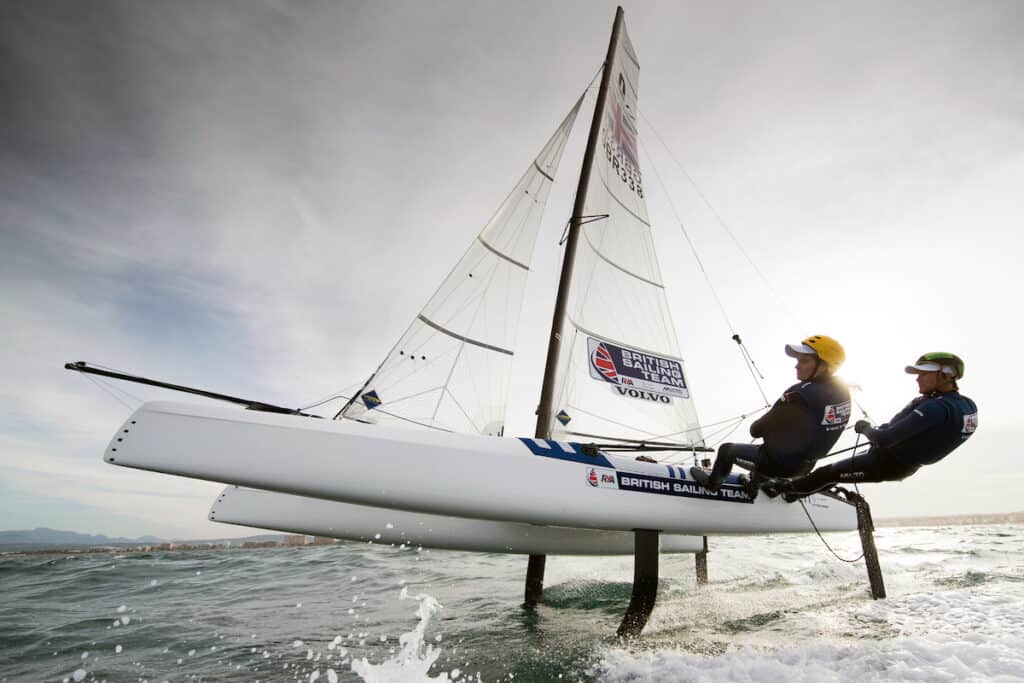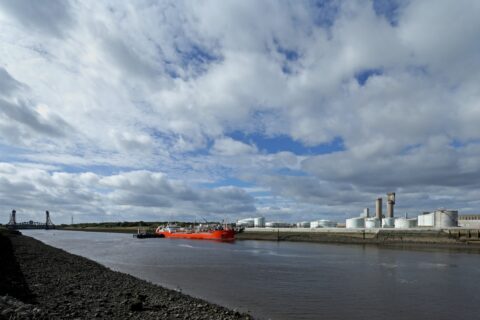
The sight of cleaner and greener passenger ferries skimming the surface of the seas is now one step closer to reality, as researchers in Sweden have discovered a unique method for further developing the use of hydrofoils. The wider application of hydrofoil technology could significantly increase the range and viability of electric vessels, plus reduce the fuel consumption of fossil-powered ships by as much 80%.
While the electrification of cars is well advanced, the world’s passenger ferries are still powered almost exclusively by fossil fuels. The limiting factor is battery capacity, which is not enough to power ships and ferries across longer distances. Now, however, researchers at Chalmers University of Technology and the marine research facility SSPA have succeeded in developing a method that could help green the shipping industry significantly in the future.
The focus is on hydrofoils that, like wings, lift the hull of the vessel above the surface of the water and allow the boat to travel with considerably less water resistance. In recent years, this technology has revolutionised sailing, by enabling the craft of elite sailors to fly over the surface of the water at very high speed. The research now shows that applying the hydrofoil principle to larger passenger ferries could result in major benefits for the climate.

The discovery is a potential gamechanger for zero-carbon passenger transport by sea, explains research leader Arash Eslamdoost, Associate Professor in Applied Hydrodynamics at Chalmers and author of the study Fluid-Structure Interaction of a Foiling Craft, first published in the Journal of Marine Science and Engineering:
“The electrification of ferries cannot be done without drastically reducing their water resistance. This method will allow the development of new foil designs that can reduce resistance by up to 80%, which in turn would significantly increase the range of a battery-powered ship. In this way, we could also use electric ferries on longer distances in the future.”
Even for ships that today run on fossil fuels, the climate benefit could be significant, as similar hydrofoil technology could also cut fuel consumption by no less than 80%.
Unique measurement method sparks interest
At the centre of the research project is a unique measurement technique that the researchers have put together in order to understand in detail how hydrofoils behave in the water when, for example, the load or speed increases or the positioning of the hydrofoil changes.
Using data collected from the experiments, the team has developed and validated a method to simulate and predict with great precision how the hydrofoil would behave under a variety of conditions. This unique method can also now be used to develop the design of hydrofoils for electric-powered ferries.
The study was conducted in collaboration with the maritime research facility SSPA – one of only a few of its kind in the world. The possibilities opened up by the new measurement method are extensive and exciting, says Senior Researcher and Project Manager at SSPA, Laura Marimon Giovannetti, who is the lead author of the study:

“At the Americas Cup in San Francisco Bay in 2013, it was the first time we saw a 72-foot sailing boat learning how to ‘fly’ using hydrofoils during the competition. Since then, we’ve seen a huge increase in sailing boats with hydrofoils. With this new method and knowledge we are able to bring together a range of different branches of engineering — naval architecture, advanced materials and aeronautics, as well as renewable energy.”
Marimon Giovannett has herself competed at the elite level for both the British and Italian national sailing teams. Today, she is a research and development adviser to Sweden’s Olympic committee and the Swedish national team.
Paving the way for hydrofoils on electric ferries
Hydrofoil technology is not in itself a novelty, but was developed as early as the 1960s and ’70s. Back then, the focus was on getting boats to travel at as fast as possible and the hydrofoils were made of steel, a heavy material with higher maintenance costs.
Modern hydrofoils are made of carbon fibre, a much lighter and stiffer material that can maintain its rigidity even under high loads — and can be tailored to suit. Part of the research therefore aimed to fully understand how a carbon-fibre structure behaves underwater during different operational conditions.
The research team’s method developed in association with modern technology is now paving the way for the use of carbon-fibre hydrofoils on larger passenger ships that can travel in a safe, controlled and climate-friendly way even at low speeds, concludes Professor Eslamdoost:
“You want the foil to be as efficient as possible, which means carrying as much weight as possible at as low a speed as possible, with the least resistance. Our next goal is to use this method when designing more efficient hydrofoils for ferries in the future.”
Founded in 1829, Chalmers University of Technology is based in Gothenburg, Sweden. With 3100 employees and 10,000 students, the University conducts research in technology and natural sciences at a high international level and offers education in engineering, science, shipping and architecture.
Further Reading:
- More about Chalmers University of Technology; and the marine research facility SSPA;
- More about Fluid-Structure Interaction of a Foiling Craft and the Journal of Marine Science and Engineering;
- Also on SustMeme, Zero-emission ship design unveiled as ‘Tesla of the Seas’;
- Also on SustMeme, Round-the-world boat race to make waves in sustainability;
- Also on SustMeme, Green berthing area for Port of Hamburg moors ships off-grid;
- Also on SustMeme, First hybrid crew transfer vessels for UK offshore wind farm;
- Also on SustMeme, World Sailing challenge inspires new electric boat innovation.
>>> Do you have sustainability news to broadcast and share? If you would like to see it featured here on SustMeme, please use these Contact details to get in touch and send us your Press Release for editorial consideration. Thanks.






